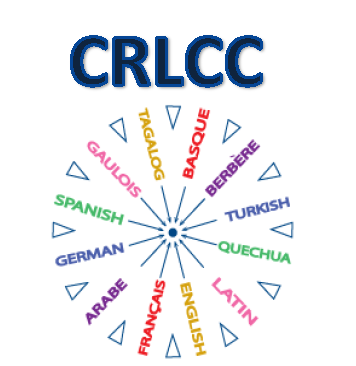The videos in this section illustrate the sad reality that many languages are facing: extinction. Many videos also explore what may be done to prevent or lessen the losss.
190 línguas indígenas podem desaparecer no Brasil According to the UNESCO almost two hundred indigenous languages in Brazil could disappear in the years to come.
Our Languages – PREVIEW
“Part of the Indians in Brazil series, Our Languages relates the historic repression of indigenous languages in Brazil. Many Indian languages were nearly lost thanks to missionaries and merchants – who rewarded Indians for learning Portuguese with status and material gifts – and government-sponsored schools that punished children for speaking in their native tongues. In spite of all this repression, individual acts of resistance and cultural preservation mean there are still more than 180 Indigenous languages spoken in Brazil today.”
Inuit in the northernmost past of Quebec are worried about the survival of their language, Inuktitut. Hear their story. May 20 and 22, 2012 – CBC C’est la vie
Keeping native languages alive in the city – CBC June 19
In part one of this episode. It’s no secret that many First Nation bands are struggling to keep the languages alive on the reserves across Canada. But what about in the city? Many aboriginal people choose to live off reserve in cities like Calgary. Desirae Desnomie (Deh-NO-mee) is trying to preserve her Cree language and culture in an urban setting.
Speaking in Tongues: The History of Language Episode # 5 Life and Death – preview.
It is predicted that within a century more than half of the worlds languages will become extinct, but as languages are lost, new ones emerge naturally or are constructed. In this program, Noam Chomsky; Esperantist Thomas Eccard; endangered languages researcher Peter Ladefoged, who has since passed away; and others provide insights into the language life cycle. Topics include constructed languages such as Esperanto, language endangerment and preservation, and the role of globalization in language obsolescence. The experts also discuss current language trends and offer their opinions on which languages may emerge as front-runners of the future. (48 minutes) One part of a five part ground breaking documentary series.
“If That Language May Be Dying, Why Are You Studying It?” By Thomas T. Field
Current interest in endangered languages provides an opportunity to reflect on the ways in which linguistics tackles the study of language. These are more varied than outsiders tend to assume and leave linguists uncertain about how they fit into C.P. Snows two cultures schema of science and the humanities. Professor Field will provide examples from his work on the development and current status of Gascon.
Tucker Childs – Documenting Dying Languages in West Africa
This presentation introduces a project documenting a dying language in Sierra Leone, West Africa, where a civil war has destroyed whatever infrastructure once existed in a place where no roads ever reached. Because only twenty very old speakers of the language are still around, the three-year project is something of an urgent salvage operation, and must acquire the most robust and high-quality data possible since this will be the only chance to document the language before it disappears entirely. Digitization and miniaturization technologies have served such enterprises well. So have computers and advances in storage and data capture possibilities.
Languages in Africa on VOA’s In Focus
VOA’s producer Bart Child talks about his series that examines languages in Africa.
Lost Voices: Pt 1 on VOA’s In Focus
VOA’s Bart Childs traveled with a team of researchers to document a few of the lost African languages in this Pt. 1 series called “Lost Voices: Getting There.”
Lost Voices: Pt 2 on VOA’s In Focus
VOA’s Bart Childs explores the role of song and dance in the culture of Kim in Nyandehun, Sierra Leone.
Lost Voices Pt 3 on VOA’s In Focus
VOA’s Bart Childs explores how local staples play a role in the dying language of “Bom” in Sierra Leone.
Lost Voices Pt 4 on VOA’s In Focus
VOA’s Bart Childs’ final segment of “Lost Voices: pt 4” where he talks to children about their language.
Ongota, a dying language
Ongota is a story of a one man’s mission to save a dying language. Italian linguist, Graziano Savà, travels to a remote corner of Ethiopia to live and work with the twelve last remaining speakers of the Ongota language. When they die, the language dies. Graziano’s solution to save Ongota from extinction is to transform it from an oral to a written language. It’s a struggle against time.
The Last Speakers (National Geographic)
Languages are disappearing at such an alarming rate that many have declared a global language extinction crisis. The Last Speakers book is the poignant chronicle of author K. David Harrison’s expeditions around the world to meet with last speakers of vanishing languages.
Project Aims to Catalogue Endangered Languages
While there are nearly 7,000 languages, only 83 are used by a majority of the world’s population. Researchers say many of the rest are in danger of disappearing, warning that perhaps half the world’s native languages will no longer exist by the end of the century. David Harrison with the Living Tongues Institute for Endangered Languages says language extinction is a crisis of unprecedented proportions and he is trying to do something about it. VOA’s Paul Sisco has more.
Indigenous languages revive and thrive in Mexico
About half the estimated 7,000 languages spoken in the world today may disappear by the end of this century. The world loses another language approximately every two weeks.
A dying Mexican language (Ixcatec)
News story featuring Michael Swanton on Ixcatec language of Mexico.
Teaching French in minority contexts
Teaching the French language is a topic up to date in most of Canada. But what is it like elsewhere?


